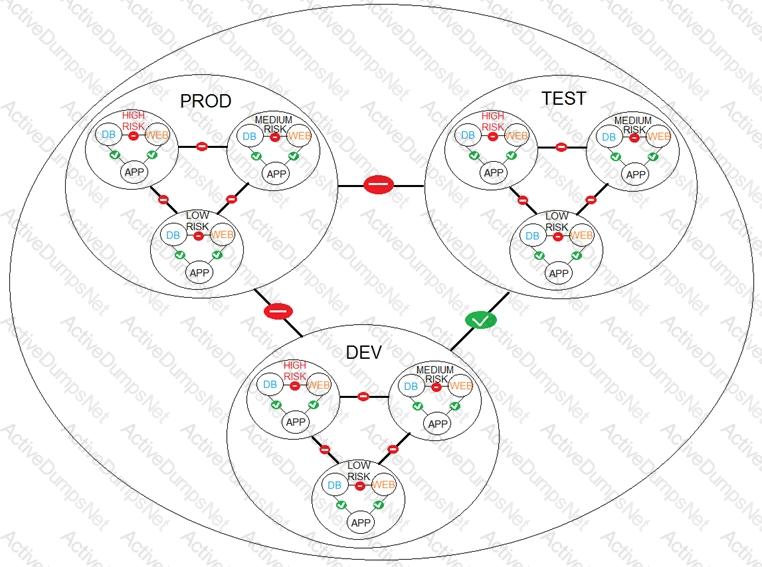VMware 3V0-42.20 Advanced Design VMware NSX-T Data Center Exam Practice Test
Advanced Design VMware NSX-T Data Center Questions and Answers
Refer to the exhibit.

A financial company is adopting micro-services with the intent of simplifying network security. An NSX-T architect is proposing a NSX-T Data Center micro-segmentation logical design. The architect has created a diagram to share with the customer.
How many security levels will be implemented according to this Logical Design? (Choose the best answer.)
Which NSX-T feature is used to allocate the network bandwidth to business-critical applications and to resolve situations where several types of traffic compete for common resources? (Choose the best answer.)
An administrator is asked to improve Recovery Point Objective (RPO) and Recovery Time Objective (RTO) for Disaster Recovery (DR) in their company network. The network has a primary site and a secondary site. The ability to support outages with minimum loss of connectivity to the company’s core application is a priority.
Which design should the administrator recommend? (Choose the best answer.)
An architect is helping an organization with the Physical Design of an NSX-T Data Center solution.
This information was gathered during a workshop:
- Current hypervisor of choice is KVM.
- Cost reduction is important.
Which two selections should the architect recommend to the organization? (Choose two.)
An architect is helping an organization with the Conceptual Design of an NSX-T Data Center solution.This information was gathered by the architect during the Discover Task of the Enagagement Lifecycle:
- There are applications which use IPv6 addressing.
- Network administrators are not familiar with NSX-T Data Center solutions.
- Hosts can only be configured with two physical NICs.
- There is an existing management cluster to deploy the NSX-T components.
- Dynamic routing should be configured between the physical and virtual network.
- There is a storage array available to deploy NSX-T components.
Which constraint was documented by the architect? (Choose the best answer.)
Which two resources can be used by an NSX architect during the Assessment Phase? (Choose two.)
Which selection must be taken into consideration when creating a Logical Design for a planned migration? (Choose the best answer.)
An architect is helping an organization with the Physical Design of an NSX-T Data Center solution.
This information was gathered during a workshop:
- There are six hosts and hardware has already been purchased.
- Customer is planning a collapsed Management/Edge/Compute cluster.
- Each host has two 10Gb NICs connected to a pair of switches.
- There should be no single point of failure in any proposed design.
Which virtual switch design should the architect recommend to the organization? (Choose the best answer.)
